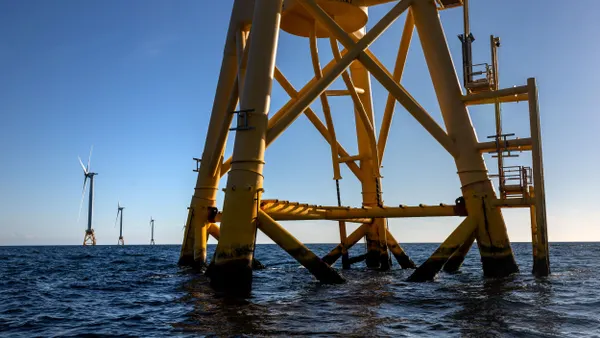Dive Brief:
- A Jersey Journal reporter recently got an inside look at the Port Authority of New York and New Jersey's Materials Engineering Unit testing lab, where the agency annually tests 25,000 pieces of concrete for strength and durability.
- Blocks and cylinders of cement removed from Port Authority infrastructure projects are subjected to crushing, electrical conductivity, freeze-thaw cycles and pressure tests to forecast material durability.
- The Port Authority is raising efforts to use more stone aggregate and less cement in its concrete to boost strength, while material durability for critical infrastructure is expected to last at least 100 years.
Dive Insight:
Concrete remains a critical building component for major infrastructure projects, and the Port Authority is no different. In November, the agency completed the upper span of the new Bayonne Bridge, which included a 2,500 cubic yard concrete pour for the roadway and additional concrete for traffic barriers. Targeted for completion in 2019, the bridge will ultimately feature an additional southbound span that will ostensibly double the project’s concrete bill.
The Port Authority also administers the JFK, La Guardia and Newark International Airports in addition to major marine terminals, the PATH Rail Transit system, the George Washington Bridge, and the Holland and Lincoln Tunnels.
While effective, sodium chloride rock salt from roadway deicing is a major contributor to concrete damage and deterioration. In comparison to the 25,000 pieces of concreted tested each year by the Port Authority for durability, the New Jersey Department of Transportation can store 228,000 tons of rock salt at 68 facilities statewide.
One alternative could be spray-applied shotcrete formulations. University of Nebraska scientists, for example, have developed conductive concrete with imbedded magnetite, carbon and metal fibers that can heat the substrate and help melt roadway snow and ice.












